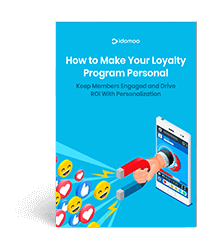The FCA is raising the bar for customer care in the financial services landscape. Firms must now adhere to the Consumer Duty: a package of measures that aims to improve customer outcomes with better communication.
This new Consumer Duty, recently issued by the U.K.’s Financial Conduct Authority (FCA), mandates that information must be easy for customers to see, rather than buried in paragraphs of text. Jargon must be swapped for easy-to-follow language. With clear, transparent communication, customers will be able to make more informed choices and see improved outcomes, especially critical during a time of financial uncertainty for many.
It’s a big deal — a “paradigm shift” regulators are calling it.
How these rules are put into practice is up to every firm. But one thing is certain: communication must be digital. Today’s customers are always online, and better communication starts with reaching customers where they are: on their phones, laptops and other devices.
How can firms revamp their digital communication to better support their customers? How can they make information clear and relevant for every consumer? From visual tools to personal touches, we dig into how firms can meet this new mandate.
The Consumer Duty: What Is It?
The Consumer Duty is a new set of rules firms in the U.K. must follow to better protect and serve consumers. The main goal of the new duty is to deliver improved customer outcomes, especially with better communication. These outcomes can be put into one of the following four categories.
- Products and services: Do products and services meet customer needs?
- Consumer understanding: Is communication clear? Are messages easy to follow
- Price and value: Are products and services reasonably priced?
- Customer support: Are customers able to receive the support they need when they need it?
With these new guidelines, the FCA will be able to quickly identify practices that are not delivering acceptable outcomes for consumers and act to get rid of them before they become the norm.
From helping customers make the right choices to supporting them in their financial goals, messages will need to be clear, helpful and above all, transparent. So how can firms meet these new expectations? We share our tips below.
Makes Messages More Visual for Better Understanding
One main focus of the new Consumer Duty is customer understanding. Rather than sift through the terms and conditions, critical information should be upfront and easily understandable.
But financial services often deal with nuanced, complex topics. Think of taking out loans. Making an investment. Finances are seldom simple.
So how can firms simplify information for their customers? By tapping into the power of visuals. It’s science — our brains can process an image in a matter of milliseconds.
Take pensions, for instance. What investments are right for me? Am I still set to retire at my goal age? Members struggle to understand topics like these when it comes to their scheme, and savers who are confused about their scheme are unlikely to use it. A staggering 90% of members are not connected with their pension provider in an online space.
To boost member engagement, and understanding, Standard Life put their members’ statements in an easy to follow video. With the help of visual aids, viewers could now clearly see the information they need to know — all in a matter of minutes. Plus, members could rewatch their explainer video at any point for a quick reminder.
Empower Customers With Personalization
Communication between financial service companies and consumers needs to not only be clear, but also relevant. By communicating what every customer needs, companies can give customers practical, actionable information to make better choices.
One problem? Every customer is different. Messages that are helpful for one customer may not be for the next person. But with personalization, you can make sure you’re sending your customers exactly what they need.
Take this Personalized Video from Honda as an example.
Imagine you’re a customer who has just received this video. You now know what and when to pay every month, when your payments will end and the options you have once they do. Even better, you can start saving early to make sure your payments are up-to-date and set aside time to think about options for the end of your plan.
As you can see, a data-driven message like this gives every viewer invaluable insight into their plan — and makes their financial journey a lot smoother.
Leverage the Latest Digital Tools
Customer-focused communication starts with looking at your customer data. Where are your customers struggling the most? When do they reach out to customer service? A look at the numbers can uncover quite a bit about your customers’ needs.
But for firms who are new to the market, or have a hard time collecting data, this can be tricky. How can firms convince customers to share their data — without compromising on the transparency of their communication?
With the latest technology, it’s possible, even easy, to do. More and more financial services are using Interactive Video to give customers valuable information — all while collecting critical first-party data.
This Interactive Video was made to help mortgage companies bolster customer support. With clickable chapter markers, customers can skip forward or go back to certain sections — and quickly get the answers they need about the end of their forbearance.
But that’s not all. Interactive Videos like these can also be tailored to every customer’s liking with in-user customization. Viewers can either select data from a drop-down menu or input it themselves straight from the video player to generate a new video with the answers they need.
It’s a win-win situation for both parties. Customers receive a personalized, interactive tool to help them make better financial choices, while companies can leverage the data input to better understand their customers and improve their communication.
Transparent Communication for Better Outcomes
The new Consumer Duty is an opportunity for firms to revamp their communication. Use easy-to-understand language and visual tools. Make it actionable with personalization. With these tips, you’re on your way to giving your customers the tools they need for financial success.
And leverage the latest technology to collect customer data. But that’s not all Living Video can do. Make finances fun by adding digital Easter eggs to your Interactive Video. Let customers give feedback straight from the video player.
Ready to try it yourself? Let’s talk.






